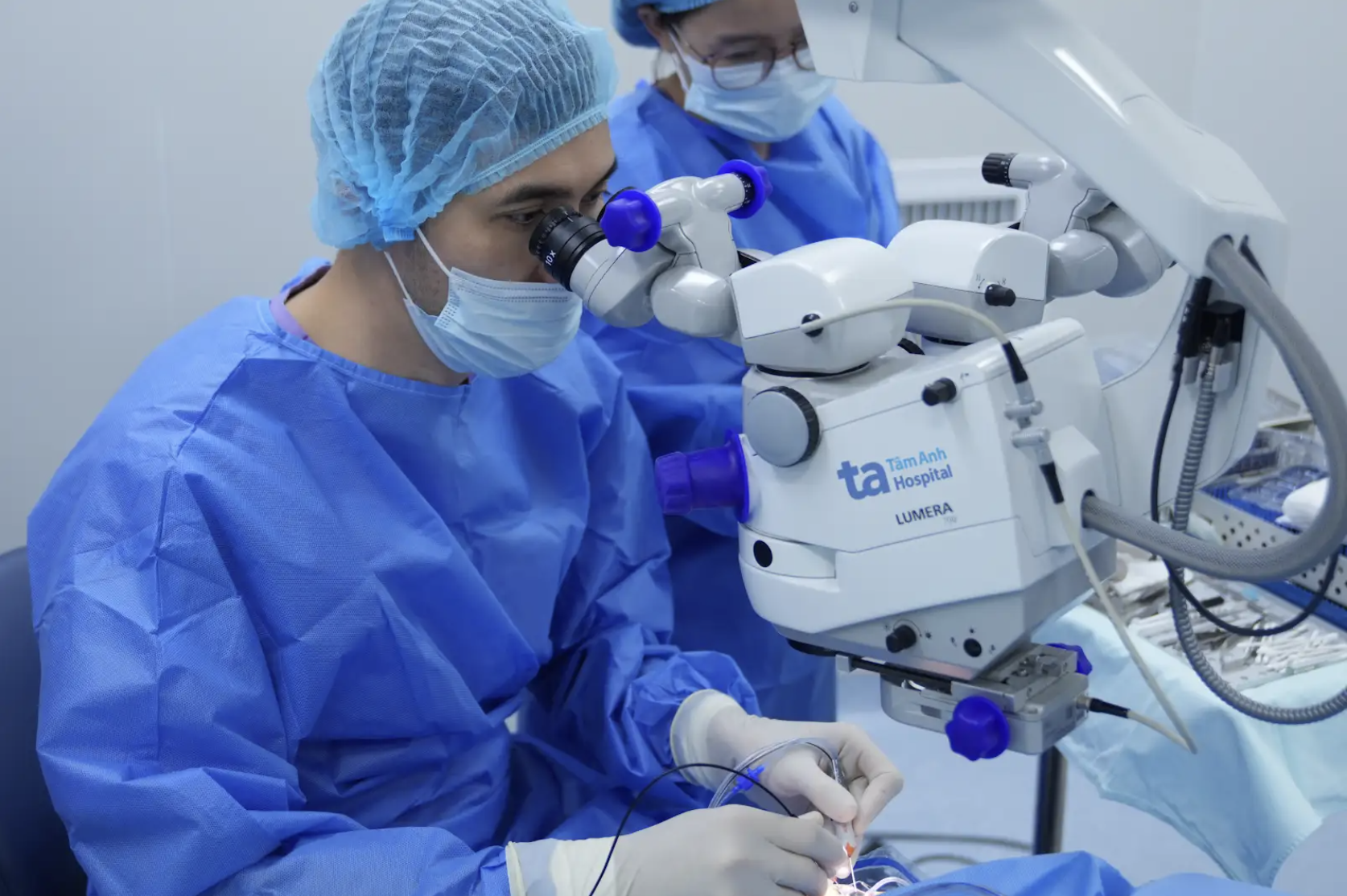Dr. Bui Viet Hung, head of the vitreoretinal department at Tam Anh General Hospital's High-Tech Eye Center, reported that an 8-year-old girl experienced a significant decrease in vision in her left eye, reducing it to 1/10, accompanied by choroidoretinal degeneration (affecting two structural layers at the back of the eye). Her retina showed signs of traction and detachment, requiring immediate intervention. Immunological tests revealed the girl was positive for Toxocara canis (dog roundworm). She needed to be stabilized before undergoing retinal reattachment surgery.
Dog and cat roundworms can be transmitted to humans through accidental ingestion of larva-containing eggs from soil, raw vegetables, or by rubbing dirty hands on the eyes. Children are particularly vulnerable due to their tendency to play outdoors and interact with pets, often without proper hand hygiene. Transmission can also occur from caregivers who don't wash their hands thoroughly. Once inside the human body, the larvae can migrate to the eyes, brain, liver, and lungs, causing serious complications. Eye damage can lead to blindness if not detected early.
"In this case, the larva entered the girl's eye through the bloodstream, where it resided and caused choroidoretinal inflammation," Dr. Hung explained. The prolonged inflammation damaged the retinal tissue, causing traction, folds, and ultimately retinal detachment, leading to vision impairment.
The patient was treated with antiparasitic medication combined with corticosteroids to reduce inflammation. As dog and cat roundworms embed themselves deep within the eye tissues, causing persistent inflammation, the treatment process is prolonged. The medication must be metabolized and doesn't directly target the parasite's location within the eye.
 |
Dr. Hung performs retinal reattachment surgery on the young girl. Photo: Tam Anh Hospital |
Dr. Hung performs retinal reattachment surgery on the young girl. Photo: Tam Anh Hospital
Once the inflammation was under control, Dr. Hung performed a vitrectomy (removal of the vitreous humor, a clear gel that maintains the shape of the eyeball) to address the retinal detachment. Using a high-speed vitrectomy machine, the doctor worked quickly to minimize anesthesia time and avoid potential developmental effects on the child's nervous system. Intraocular oil was injected to replace the vitreous fluid. The patient was instructed to lie face down to allow the oil to properly reposition the detached retina. The oil has since been removed, and the girl's vision has been restored.
Dog and cat roundworm infections can severely impact a child's vision and nervous system. Initial symptoms in children are often subtle or absent, making early detection and diagnosis challenging. In many cases, the disease is discovered late, resulting in irreversible vision damage.
Doctors recommend seeking immediate medical attention if a child experiences blurred vision in one eye, squinting, seeing black spots or flashes of light, or tilting their head while looking. Regular eye exams are advised, especially for children in households with pets. Deworming pets regularly, collecting and disposing of pet waste properly, limiting children's contact with contaminated soil, encouraging handwashing with soap after playing outdoors and before meals, and consuming cooked food and boiled water are crucial preventative measures.
Khue Lam
| Readers can submit questions about ophthalmological conditions here for doctors to answer. |












